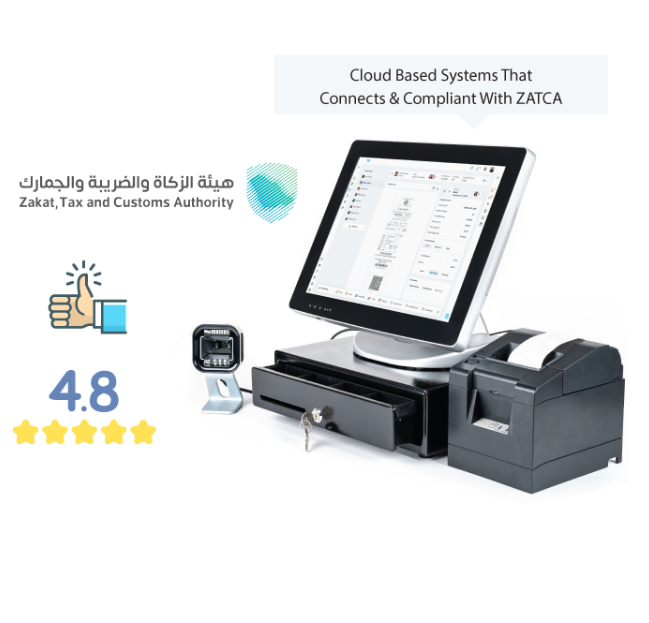E-invoicing has revolutionized how businesses handle their finances, and e invoicing saudi arabia, known as “Fatoorah,” is no exception. This electronic invoicing mandate is not just about going digital; it’s a part of the Kingdom’s vision to modernize its economy. Whether you’re a business owner, accountant, or simply curious about Saudi Arabia’s latest financial regulations, this guide will walk you through everything you need to know about e-invoicing in Saudi Arabia and how it’s changing the landscape for companies operating in the region.
What is E-Invoicing in Saudi Arabia?
E-invoicing, known locally as Fatoorah, is the electronic generation and submission of invoices. Implemented by the Zakat, Tax and Customs Authority (ZATCA), the system mandates that businesses create, store, and submit invoices digitally. Unlike traditional paper invoices, e-invoices are digital records that make tracking transactions faster and more accurate.
In Saudi Arabia, e-invoicing was introduced as part of Vision 2030, an ambitious initiative to diversify the Kingdom’s economy. This mandate is intended to streamline business operations, reduce tax evasion, and make the Kingdom more attractive to international investors.
The Main Goals of E-Invoicing in Saudi Arabia
- Increasing Transparency: Digital records allow the government to better monitor transactions, reducing tax evasion.
- Streamlining Business Operations: Automating invoicing saves time, reduces errors, and boosts efficiency.
- Modernizing the Economy: By adopting advanced technology, Saudi Arabia aims to be a leader in the Middle Eastern digital economy.
How Does E-Invoicing Work in Saudi Arabia?
The e-invoicing system works by integrating an electronic solution that enables businesses to generate, store, and submit invoices to ZATCA in real time. Here’s a simple breakdown of how it works:
- Invoice Generation: Businesses must create e-invoices in a digital format using software compliant with ZATCA’s standards.
- Real-time Reporting: These invoices are sent to ZATCA’s system for verification and storage.
- Archiving: E-invoices are stored for future reference, making it easy to access historical records for audits or financial planning.
Stages of E-Invoicing Implementation in Saudi Arabia
E-invoicing in Saudi Arabia has been rolled out in two stages to ensure a smooth transition for businesses of all sizes.
Stage 1: Generation of E-Invoices (Implemented December 2021)
This initial stage required businesses to generate and store electronic invoices. Businesses were expected to transition from paper-based systems to digital solutions, with ZATCA providing guidelines to help ensure compliance.
Stage 2: Integration with ZATCA’s System
In this phase, businesses must integrate their e-invoicing software with ZATCA’s system to enable real-time submission of invoices. This integration ensures that all transactions are recorded in real time, enhancing transparency and accuracy.
Who is Required to Use E-Invoicing in Saudi Arabia?
The e-invoicing mandate applies to all taxpayers subject to VAT and any third parties issuing invoices on behalf of taxable persons. This includes:
- Small and medium-sized businesses
- Large corporations
- Individuals and entities required to file VAT returns
However, businesses outside the scope of VAT or exempt from taxation are not required to implement e-invoicing.
Benefits of E-Invoicing for Businesses in Saudi Arabia
The shift to e-invoicing offers numerous advantages for businesses:
- Efficiency and Accuracy: By automating invoice generation, businesses can reduce manual errors, save time, and speed up the billing process.
- Reduced Tax Evasion: E-invoicing ensures all transactions are recorded, leaving little room for discrepancies and tax evasion.
- Faster Audits: E-invoicing makes it easier for businesses and auditors to access transaction records, speeding up the audit process.
- Environmentally Friendly: Moving from paper to digital invoices reduces paper consumption, supporting environmental sustainability.
Challenges Businesses May Face with E-Invoicing
Like any new system, e-invoicing comes with its own set of challenges:
- System Compatibility: Businesses need to ensure their existing software can integrate seamlessly with ZATCA’s e-invoicing platform.
- Initial Setup Costs: Implementing a new system may require an initial investment in compliant software and training.
- Training Staff: Employees need training on using the new e-invoicing system, which can take time and resources.
How to Choose E-Invoicing Software for Your Business in Saudi Arabia
Selecting the right e-invoicing software is essential for compliance and efficiency. Here are some factors to consider:
1. ZATCA Compliance
Ensure the software you choose complies with ZATCA’s requirements. Non-compliant software may not support the necessary features for integration with the government’s system.
2. Ease of Use
Look for software with a user-friendly interface to make it easier for your team to adopt. Training and transition will be smoother with a simpler system.
3. Scalability
As your business grows, you’ll need software that can handle an increased volume of invoices without sacrificing performance.
4. Real-Time Reporting
Choose a platform that offers real-time reporting, allowing you to track invoices and get up-to-date insights into your finances.
5. Data Security
Make sure the e-invoicing software has robust security features to protect sensitive financial data from unauthorized access.
Popular E-Invoicing Software Solutions in Saudi Arabia
A number of software solutions are available in Saudi Arabia to help businesses comply with the e-invoicing mandate. Here are some options:
- Cordis Fatoorah: Specializes in compliant and efficient e-invoicing for businesses of all sizes.
- SAP Ariba: A popular choice among large enterprises for handling e-invoicing and procurement.
- Zoho Invoice: Known for its user-friendly interface, suitable for small and medium-sized businesses.
Each platform offers different features, so it’s essential to choose one that aligns with your business needs.
How to Implement E-Invoicing in Your Business
Implementing e-invoicing in your business doesn’t have to be complicated. Here’s a step-by-step guide to help you get started:
Step 1: Assess Your Current Invoicing System
Before making any changes, evaluate your existing invoicing process. Identify any bottlenecks or inefficiencies that can be addressed by e-invoicing.
Step 2: Select the Right Software
Based on the factors we discussed earlier, choose an e-invoicing platform that suits your business’s needs and complies with ZATCA’s guidelines.
Step 3: Train Your Team
Provide training to ensure everyone understands how to use the new system. Training sessions should cover everything from creating invoices to submitting them for compliance.
Step 4: Monitor Compliance
Regularly monitor your system to ensure you’re compliant with ZATCA’s requirements. Compliance checks can help you avoid any penalties.
Step 5: Regular Updates and Maintenance
Keep your software up-to-date with the latest requirements from ZATCA. Regular updates will help you stay compliant and avoid disruptions.
Penalties for Non-Compliance with E-Invoicing Regulations
Failure to comply with the e-invoicing mandate can result in fines and other penalties. Some common reasons for penalties include:
- Using non-compliant software
- Failing to submit invoices in real time
- Inaccurate or incomplete invoice data
Ensuring compliance from the start can save your business from potential fines and legal issues.
The Future of E-Invoicing in Saudi Arabia
As Saudi Arabia continues to modernize its economy, e-invoicing is expected to expand. Over time, additional features and capabilities may be introduced, such as advanced analytics, AI-driven insights, and enhanced integration with other business platforms. For businesses, this will mean even greater convenience and efficiency in managing finances.
Conclusion
E-invoicing in Saudi Arabia is more than a regulatory requirement; it’s a gateway to a more efficient, transparent, and modern business landscape. By embracing Fatoorah and complying with ZATCA’s guidelines, businesses can stay ahead in today’s digital economy. Whether you’re just starting out with e-invoicing or are looking for ways to optimize your current setup, following the steps outlined above will ensure a smoother transition. So, is your business ready for the future of invoicing? It’s time to make the switch and join the digital revolution.





